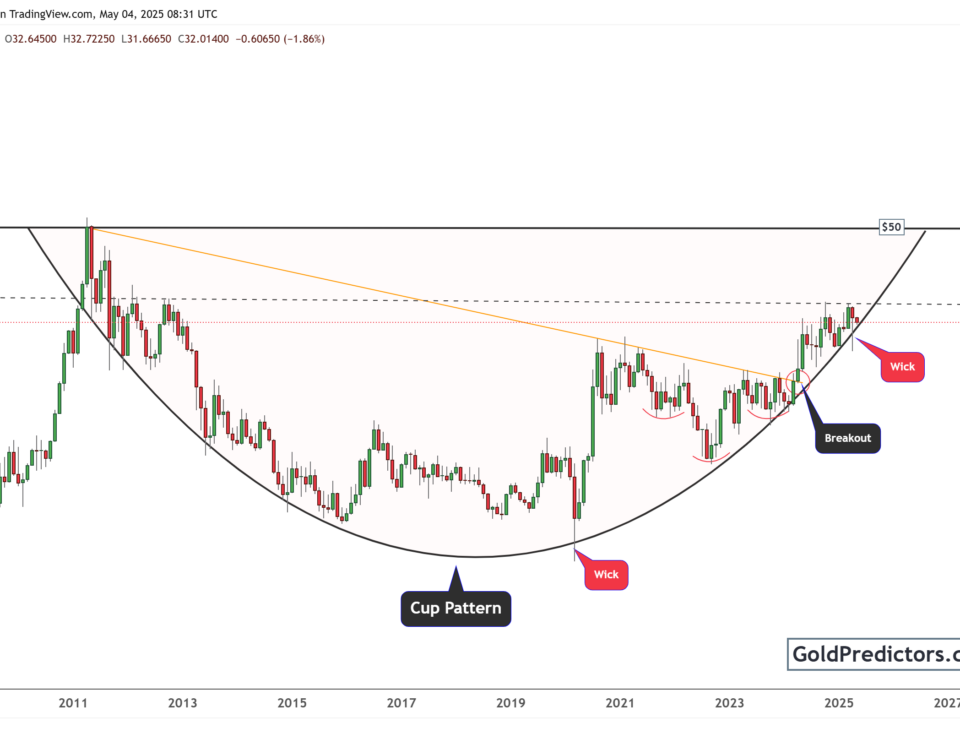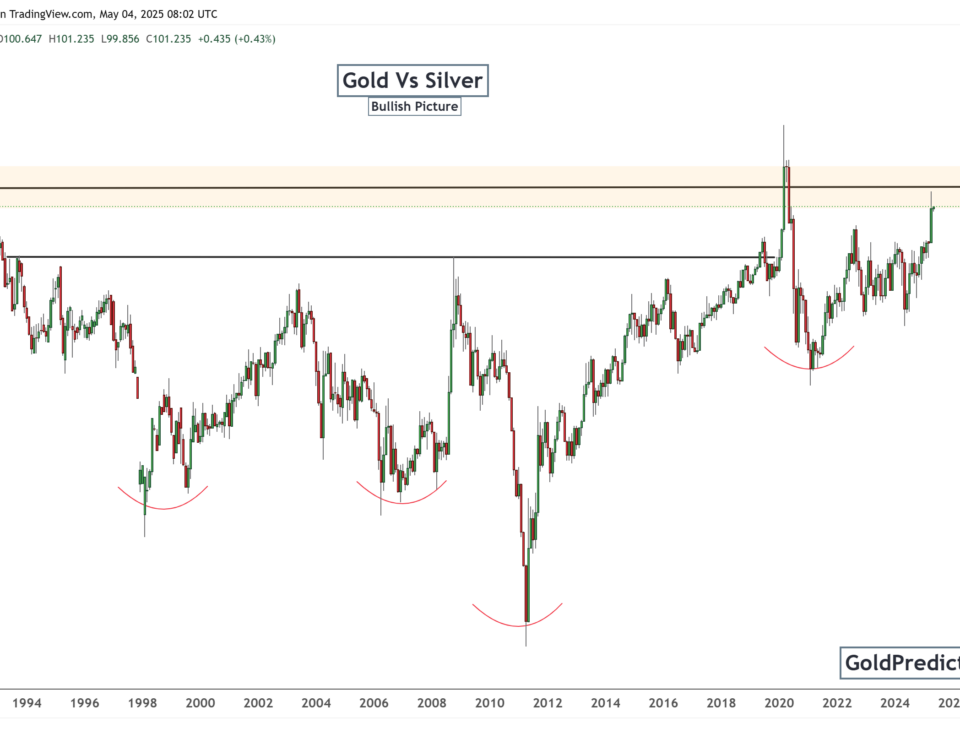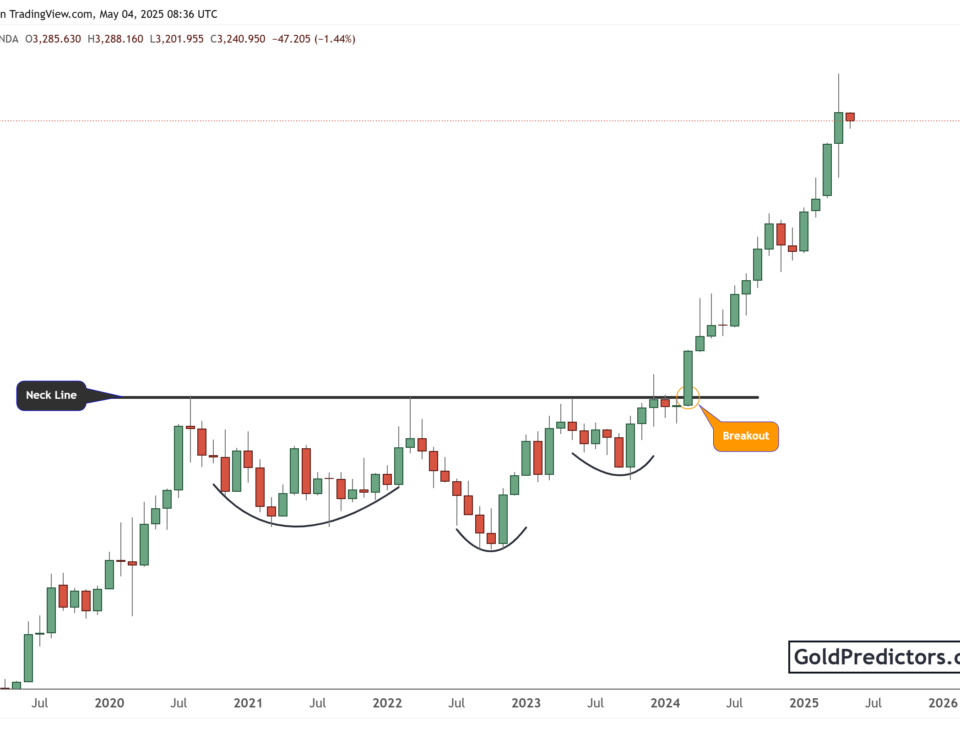Gold to find next support amid geopolitical tensions
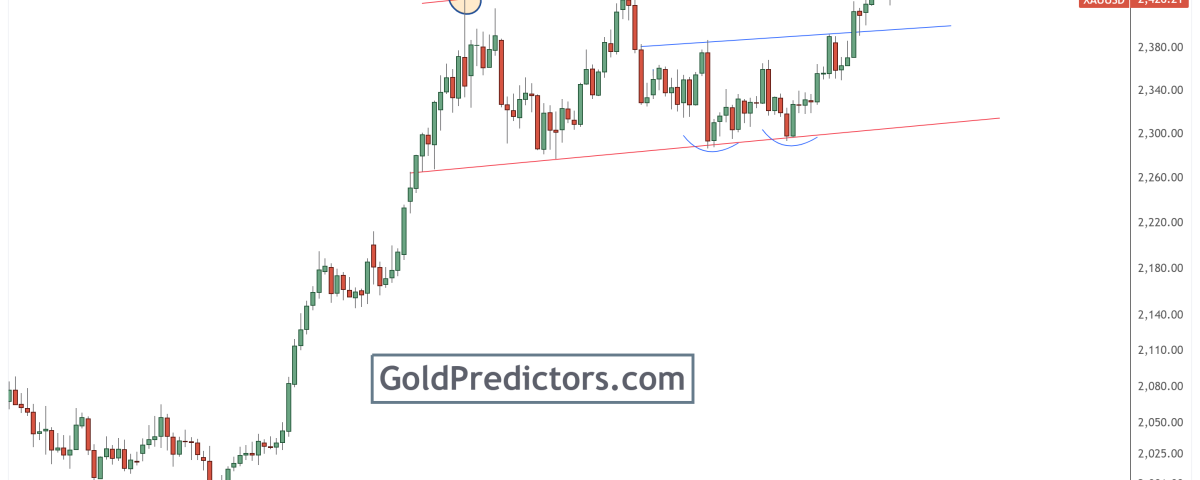
Gold prices have been under pressure due to a recent rebound in the US Dollar, exacerbated by mixed economic signals and rising geopolitical tensions. Recent US labor market data shows an increase in unemployment claims, signaling a loosening job market. This raises expectations that the Federal Reserve might soon start cutting rates, potentially offsetting the positive outlook from a resilient manufacturing sector. Meanwhile, geopolitical uncertainties, including comments about Taiwan’s defense and ongoing conflicts in the Middle East and Ukraine, continue to support gold as a safe-haven asset. The combination of these factors creates a complex environment for gold prices, with potential upward movement from safe-haven demand countering the effects of a stronger dollar and anticipated rate cuts.
US Labor Market Loosening and Fed rate cut prospects weigh on gold
The recent rebound in the US Dollar has exerted downward pressure on gold prices for the third consecutive day. The latest data from the US Bureau of Labor Statistics (BLS) showed an increase in the number of Americans filing for unemployment benefits, rising to 243,000 in the week ending July 13. This increase and the highest 4-week moving average in over two and a half years indicate a loosening labor market. These factors are setting the stage for the Federal Reserve to begin a rate-cutting cycle soon as the inflations decrease. This prospect could counterbalance the positive momentum from US manufacturing data.
Moreover, the Philadelphia Fed Manufacturing Index shows six consecutive months of positive growth. This highlights a resilient manufacturing sector. However, market expectations for rate cuts remain strong, as evidenced by the CME Group’s FedWatch Tool predicting a good chance of a rate cut in September and two more by the end of the year.
On the other hand, geopolitical developments are also influencing gold prices. Former President Donald Trump suggested that Taiwan compensate the US for its defense commitments. This has raised uncertainties about the US’s stance on defending Taiwan against potential Chinese aggression. This adds to geopolitical tensions from ongoing conflicts in the Middle East and the prolonged Russia-Ukraine war, creating a supportive backdrop for gold as a safe haven. The combination of geopolitical risks and economic indicators pointing towards a possible easing of monetary policy by the Federal Reserve suggests a complex environment for gold prices, with potential upward pressure from safe-haven demand offsetting the effects of a stronger dollar and anticipated rate cuts.
Technical price development
The technical perspective indicated that the drop from resistance was anticipated and communicated to premium members when spot gold was trading at $2480. It was discussed that prices would likely drop to find the following support. The gold market began to correct the lower position from this resistance area to the next support region, where buyers are expected to enter. The emergence of a double bottom suggests that prices are building bullish momentum. Given that July follows the seasonal correction, price fluctuations before the next move higher should not be ignored.
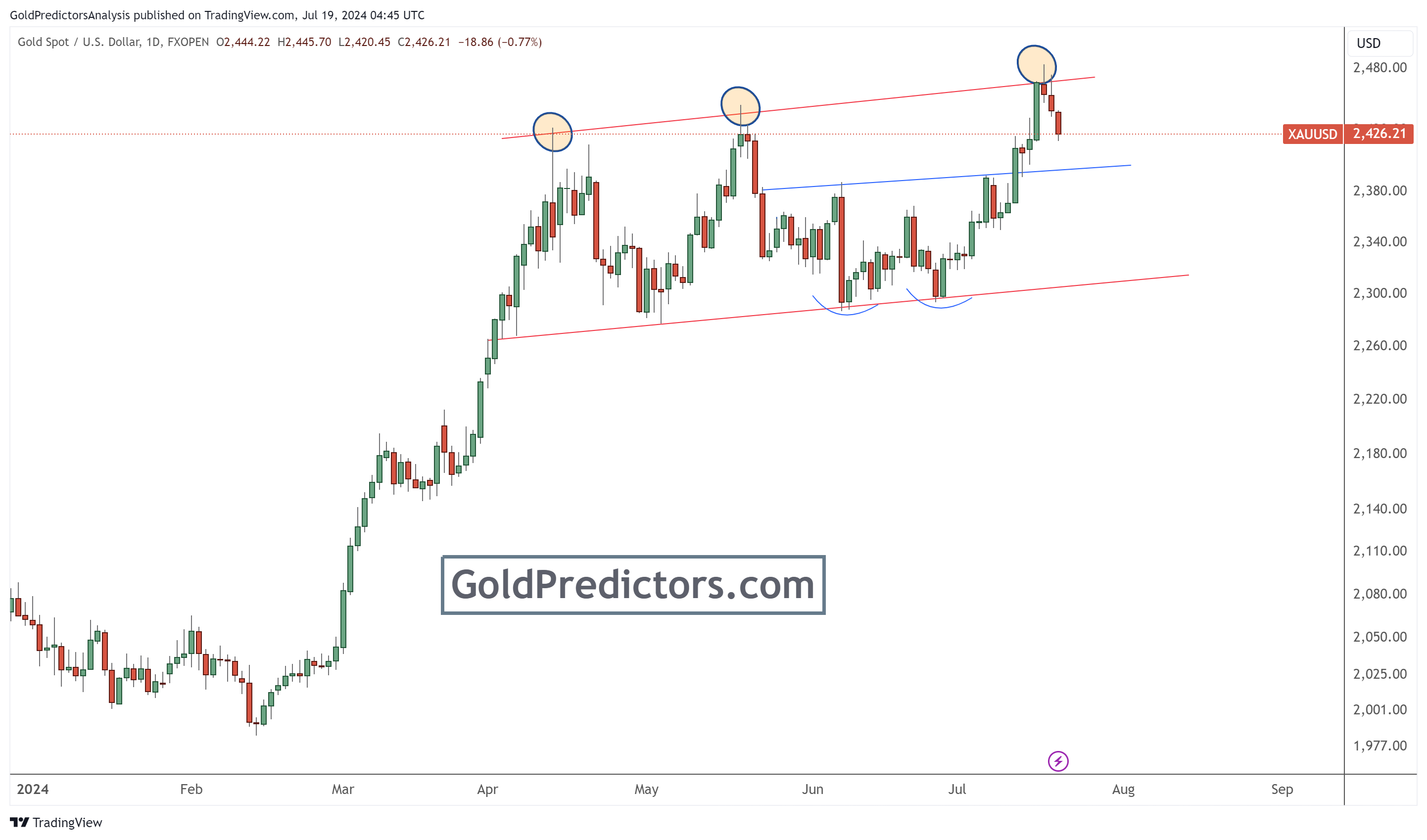
Bottom line
In conclusion, the gold market is navigating a complex landscape shaped by a strong US Dollar, mixed economic data, and heightened geopolitical tensions. The anticipated drop from resistance has materialized as forecasted, with gold prices correcting lower and approaching a key support level where buying interest is likely to re-emerge. While the labor market shows signs of loosening and the Federal Reserve is poised for potential rate cuts, typically weighing on gold, geopolitical uncertainties, and conflicts continue to bolster its appeal as a safe-haven asset. The emergence of bullish technical patterns and seasonal fluctuations indicates that the market is preparing for potential upward movement. As such, the interplay between these factors will be crucial in determining gold’s trajectory in the near term.
Gold Predictors offers trading signals for gold and silver. Subscribe here to receive these valuable trading insights.





